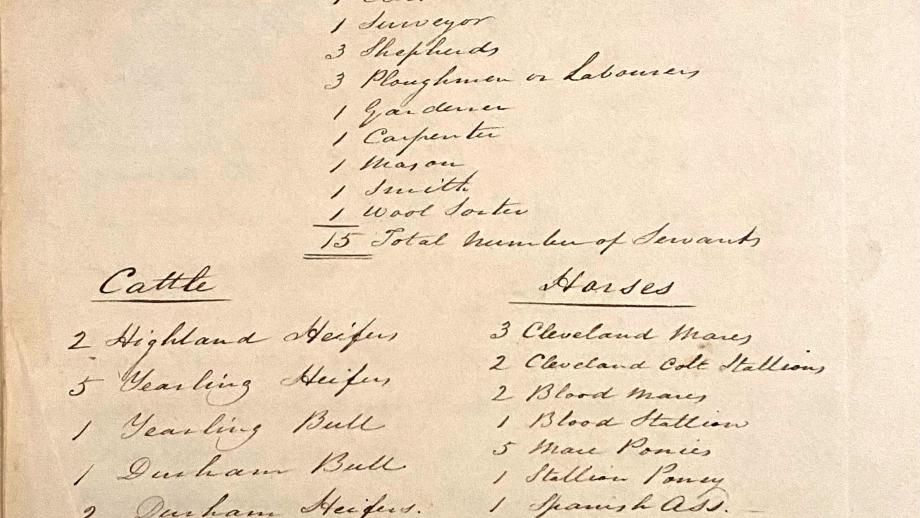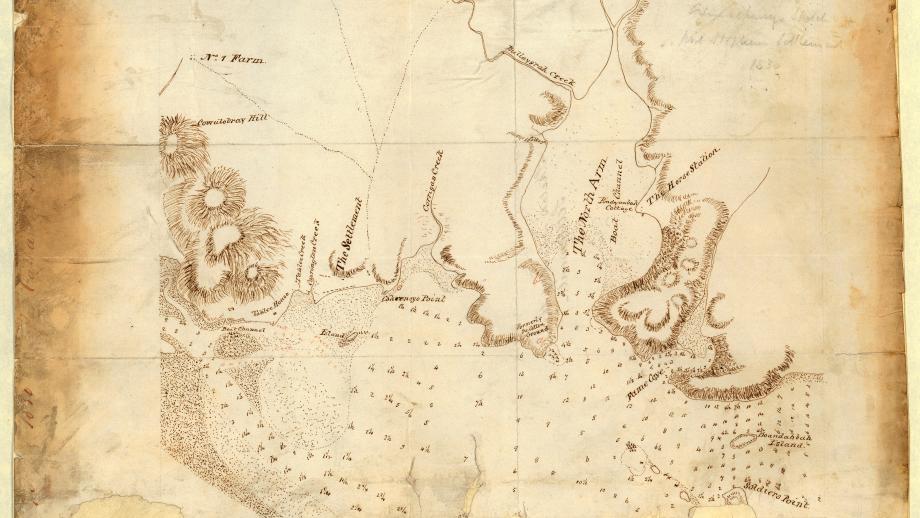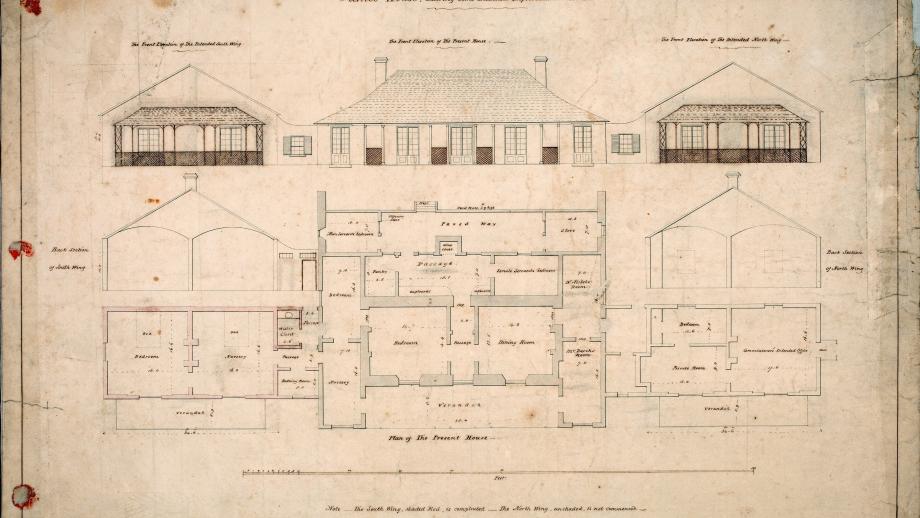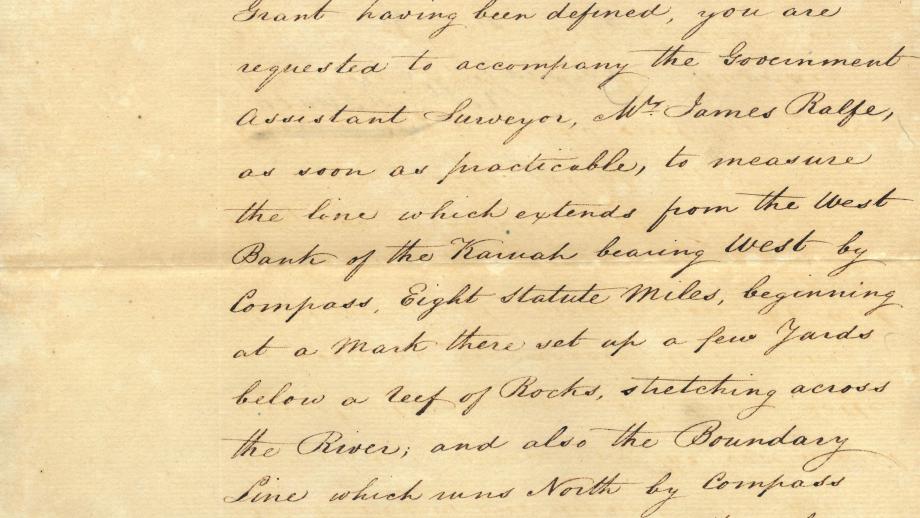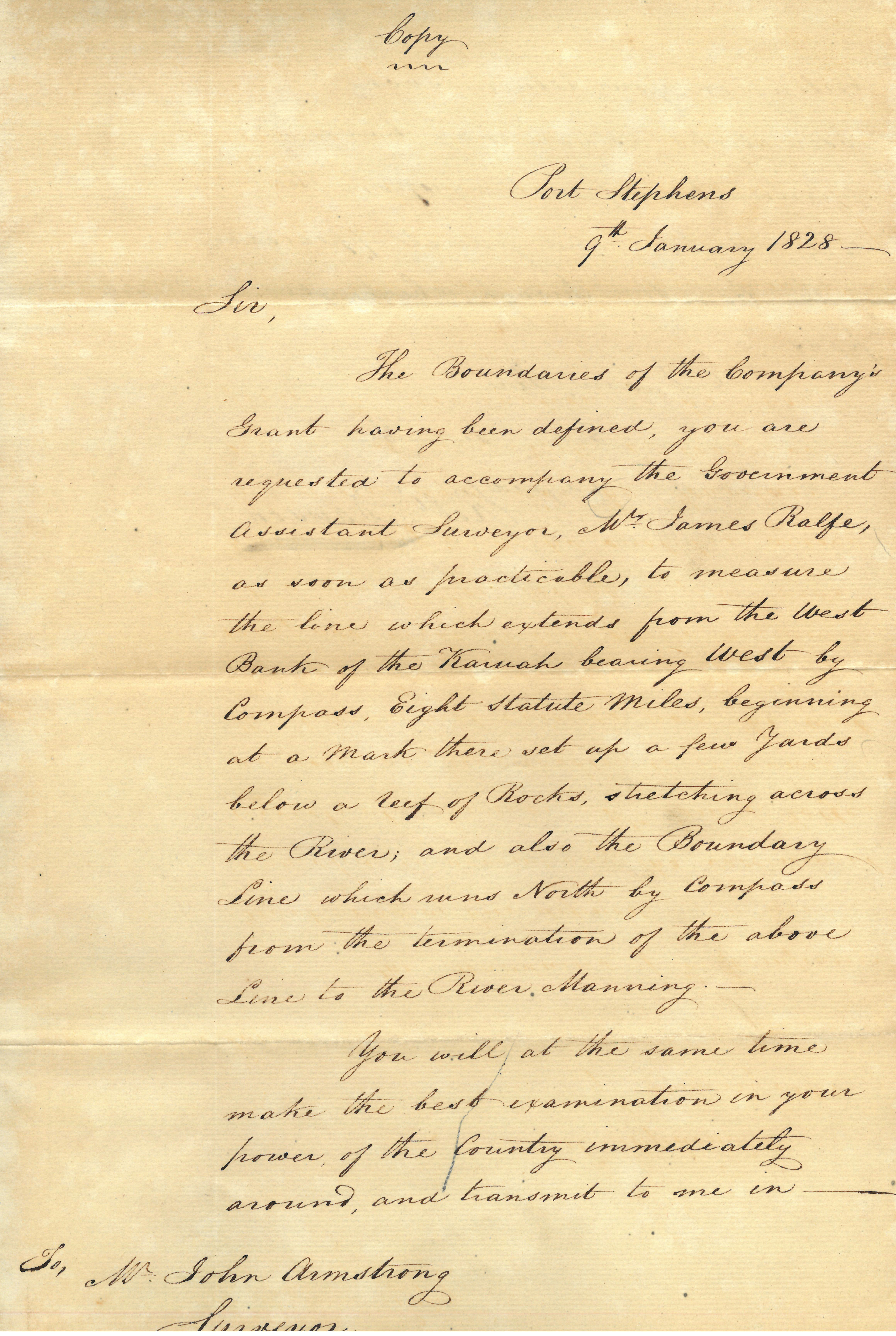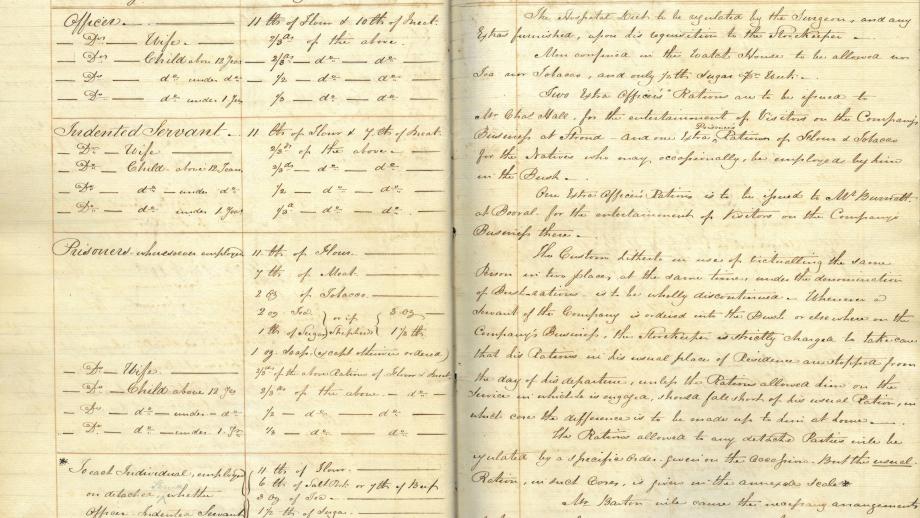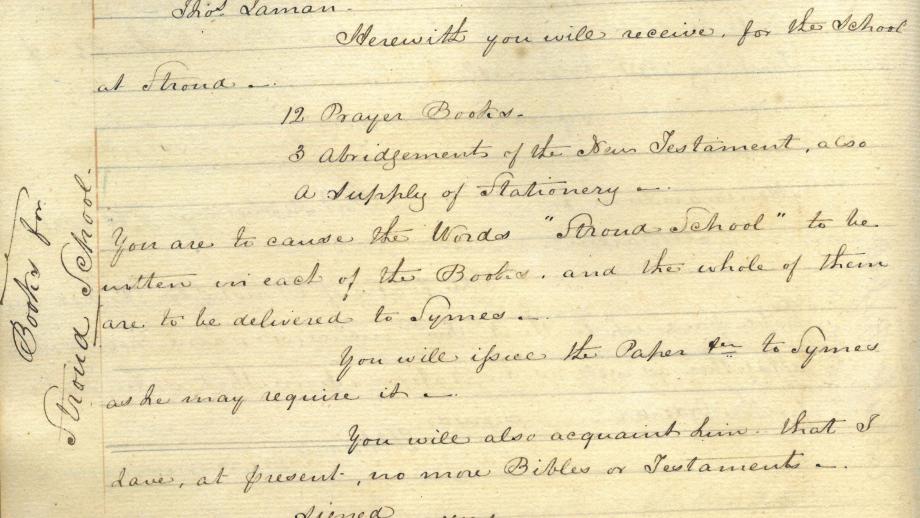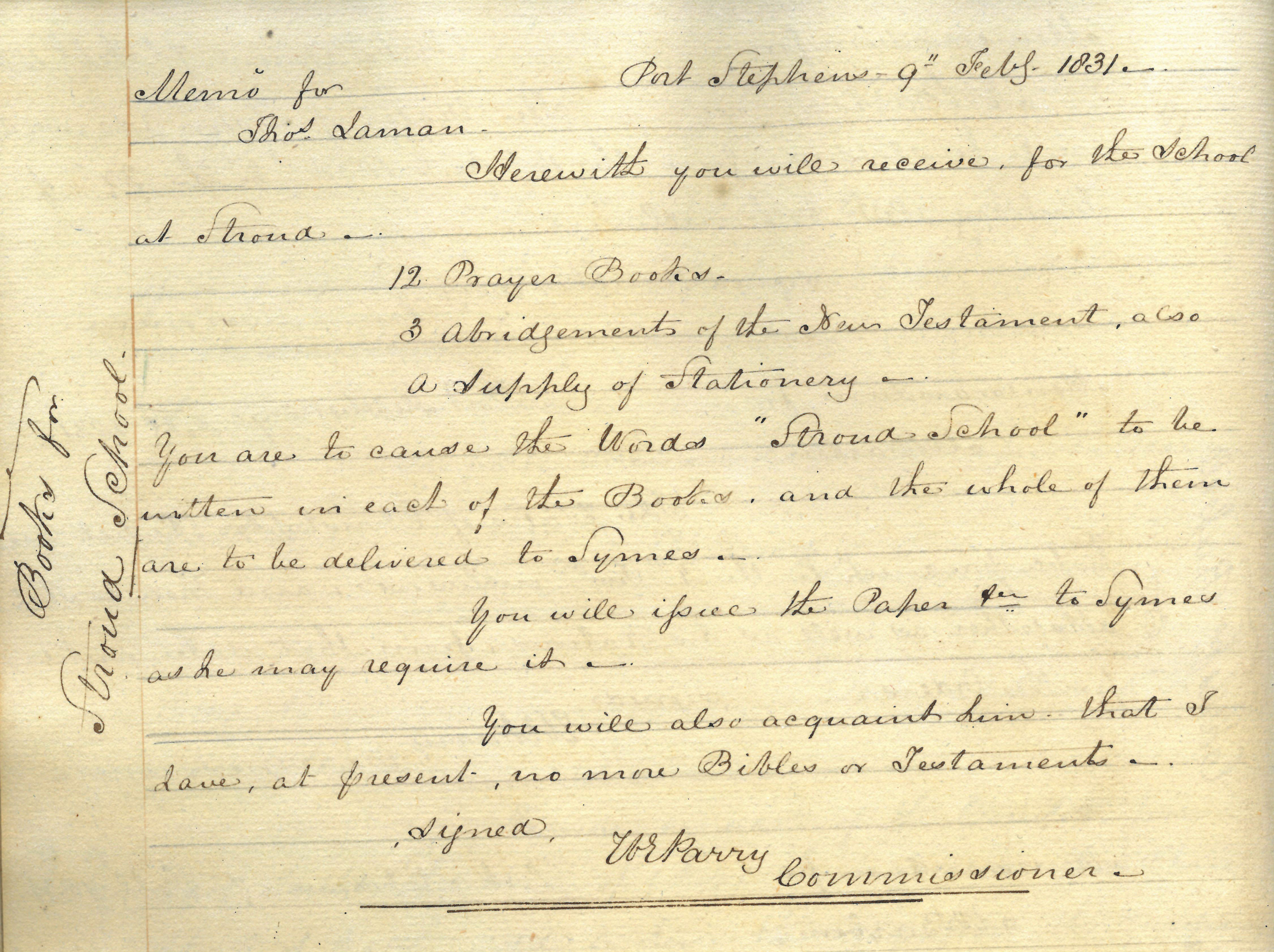The Early Years
In December 1824, John Macarthur Jnr recommended Robert Dawson be appointed Chief Agent in New South Wales for the newly formed Australian Agricultural Company. He was tasked with establishing and managing a pastoral estate spanning one million acres, to be overseen by a local committee. This committee was completely comprised of representatives from the influential Macarthur family - John Jr’s brother James, his brother-in-law James Bowman and his cousin, Hannibal Hawkins Macarthur. Dawson was explicitly instructed to heed their advice on all occasions.
Dawson gathered a group of 27 indentured servants, mostly officers and mechanics, along with their families, to travel to New South Wales, where most would be contracted to work for the Company for seven years. In March 1825 Dawson, along with clerk H.T. Ebsworth and consultant N.A. Nilson, travelled to France to purchase sheep for the Company, with others purchased in Saxony.
In June 1825 the group of 75 people sailed from Plymouth on the chartered ships York and Brothers. Also on board were 30 rams, 704 ewes, 12 cattle, and 7 horses (with 4 lambs born and 18 sheep dying on the voyage). Those that made the voyage included 1 bailiff / overseer, 1 clerk, 1 surveyor, 7 shepherds, 5 ploughmen / labourers, 2 carpenters, 1 bricklayer, 1 mason, 2 smiths, 1 wheel / mill wright, 1 miller, 1 groom, and 1 gardener. These men were accompanied by their wives and children.
After their arrival in November 1825, most of the servants and stock were sent directly to ‘The Retreat’ (later ‘Kelvin’) at Bringelly on the outskirts of Sydney, which had been rented by the Company’s Colonial Committee.
Under considerable pressure to select a suitable site to establish the Company in New South Wales, in January 1826 Dawson, along with Company Surveyor John Armstrong and Government Surveyor Henry Dangar, travelled by the Lord Liverpool to inspect Port Stephens, the traditional home of the Worimi people, who had lived in the area for tens of thousands of years. Captain James Cook had sailed near the area in 1770 and named Port Stephens after Secretary of the Admiralty, Sir Philip Stephens, and in 1795 the area was surveyed by Deputy Surveyor Charles Grimes.
Dawson and his party traced the course of the Karuah River and Dawson chose the location believing it would make good sheep country and offered convenient transport connections to receive stores and transport wool out to market. John Oxley, a shareholder of the Company and Surveyor General and Allan Cunningham, botanist and explorer, were consulted about an appropriate choice of land and initially recommended either the Liverpool Plains or the head of the Hastings River. However, the Company rejected these locations because of their distance from the coast and shipping facilities. Surveyor Henry Dangar was dispatched in September 1825 to look at the country between the Hunter and Hastings Rivers. The expedition was a quite a disaster, but he did recommend the “fine open country” in that direction. Therefore, Dawson travelled to Port Stephens with Dangar, and concluded the harbour country would make good sheep country, although he was not experienced with Merinos.
Plans were made to establish a Company settlement at what was known by the Worimi people as Carrabean / Carribean / Carribeen, and the Company’s settlers and cattle were moved north from Bringelly in February 1826, with the sheep overlanded via Wiseman’s Ferry in March / April 1826. Carrabean soon became known as Carrington in honour of Robert Smith, the brother of Company Governor (chairman) John Smith, a banker and the first Lord Carrington. Dawson had chosen to take up the whole of the Company’s million-acre grant between Port Stephens and the Manning River and the Company began to acquire large land holdings there for grazing. Within six months, the Company had established a sizeable settlement with 1,000 head of cattle and 2,000 sheep. Carrington was the first planned company town in Australia, with a population of more than 500 by 1830. It served as the business centre of the Company.
Within a short time of arriving at Carrington, the Company began construction on Tahlee House to serve as the home of Chief Agent Robert Dawson. The name Tahlee was taken from the Worimi word ‘Tarlee’ meaning ‘sheltered from the wind and above water’. In addition to Robert Dawson, Tahlee House would serve as the home of the Company’s Commissioners Sir William Edward Parry, Captain Henry Dumaresq, and Captain Phillip Parker King.


